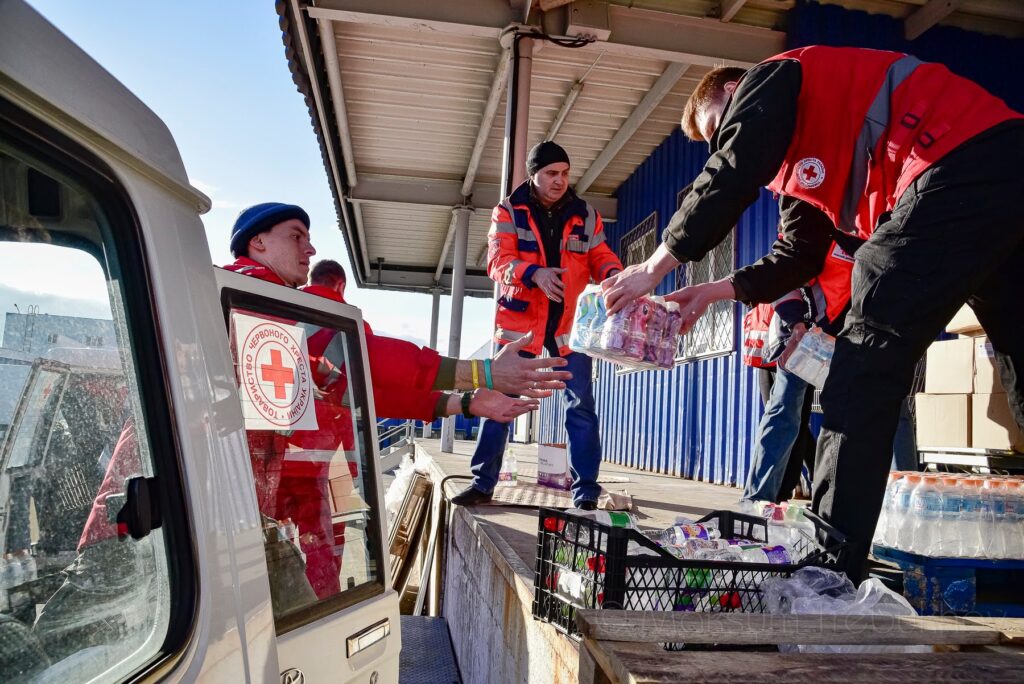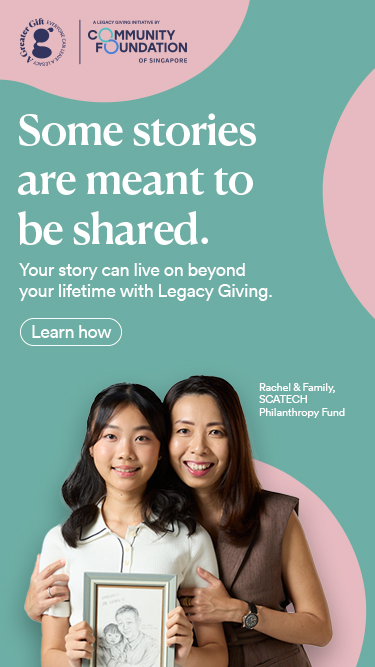Here’s how you can help the people of Ukraine – Ways to donate


The Russian invasion of Ukraine is triggering what the United Nations fears could be Europe’s largest refugee crisis this century. More than 2 million people, out of a nation of 44 million, have fled to neighbouring countries since the conflict began.
The human cost of the war is alarming and rising by the day. Hundreds of lives have been lost, and thousands of families have been displaced.
Global charities urgently call for funds to ramp up humanitarian aid in Ukraine. There is a pressing need for medical assistance, food, water, clothing, emergency cash and shelter. There are also plenty of private fundraisers online, but how do you ensure that your money will reach those who need it? How do you know that a particular fundraising appeal is legitimate? Should you send supplies like blankets and warm clothing?
One of the fastest ways to help is to donate cash to a trusted charity doing on-the-ground relief work. Donations of items are a challenge for charities to handle and distribute as in a warzone, supply chains are disrupted. Logistical options are also very limited, making it challenging to deliver bulky physical items. Cash can be used to purchase necessities more quickly at nearby unaffected regions, allowing charities to respond faster and better at this critical time.
But which charity should you be donating to? CFS is well-placed to help you navigate giving during this geopolitical crisis as a cause-neutral philanthropic advisor. For those who are looking to support Ukraine and its people, we recommend the following bona fide organisations:
Singapore Red Cross
Singapore Red Cross is the global humanitarian organisation’s local arm established in 1949. It is a credible, transparent and time-tested charity providing disaster relief assistance, both locally and internationally.
It has raised almost $3 million after launching an urgent appeal on 25 February, which is running till 31 May. The first tranche of US$100,000 reached Ukraine on 4 March and a second tranche of $2.4 million is on the way. The funds are to assist Ukrainians in the besieged nation and across six neighbouring countries – Poland, Hungary, Lithuania, Slovakia, Moldova and Romania.
The focus will be on providing aid to vulnerable people, including unaccompanied minors, single women with children, the elderly, and people with disabilities. Besides giving emergency relief aid, the charity will also offer shelter, health, water, sanitation, hygiene, and psychosocial support.
Donate to the Singapore Red Cross here.
Caritas Humanitarian Aid & Relief Initiatives, Singapore (CHARIS)
CHARIS is the umbrella body for overseas humanitarian aid by the Archdiocese of Singapore. Launched in 2010, CHARIS Singapore is a legitimate charity that provides both immediate and long-term relief to persons who have been forcibly displaced, as well as those in need.
In response to the crisis in Ukraine, CHARIS Singapore has pledged an initial $100,000 from their Humanitarian Aid Fund to extend essential aid to vulnerable individuals afflicted by the war. The support will be channelled to Caritas Ukraine and Caritas Spes, which are based in Ukraine and working on the ground, to provide daily necessities, shelter, transportation and evacuation services, and psychological support to families.
Charities worldwide are responding to the growing humanitarian crisis in Ukraine and trying to bring aid to its people. If you wish to provide support directly to a foreign charitable organisation, you may consider these two verified charities: the Center for Disaster Philanthropy and The UN Refugee Agency.
Center for Disaster Philanthropy (CDP)
The US-based CDP is dedicated to helping donors maximise their impact by making more intentional disaster-related giving decisions. Since 2010, the nonprofit has directed financial and technical support to disasters and humanitarian crises.
The CDP’s Ukraine Humanitarian Crisis Recovery Fund will focus on addressing humanitarian needs that arise, particularly among the most vulnerable, marginalised and at-risk internally-displaced peoples and refugees.
Donate to CDP here.
The UN Refugee Agency (UNHCR)
UNHCR is a global organisation that aids and protects refugees, forcibly displaced communities, and stateless people. UNHCR has been working in Ukraine since 1994, providing legal, social, and humanitarian assistance, such as winter clothing and blankets and psychosocial support and emergency shelter to people afflicted by the country’s ongoing tensions.
The UN has issued a US$1.7 billion flash appeal to support humanitarian needs across Ukraine and its bordering countries. It estimates that 12 million people inside Ukraine and more than 4 million refugees may need protection and assistance in the coming months.
Donate to UNHCR here.
References:
- Begum, S. (2022, March 10). Singapore Red Cross to send $2.4m to Ukraine, neighbouring countries in second tranche of aid. The Straits Times. Retrieved March 11, 2022, from https://www.straitstimes.com/singapore/singapore-red-cross-to-send-24m-to-ukraine-neighbouring-countries-in-second-tranche-of-aid https://www.straitstimes.com/singapore/singapore-red-cross-to-send-24m-to-ukraine-neighbouring-countries-in-second-tranche-of-aid
- Centre of Disaster Philanthropy (2022). CDP Ukraine Humanitarian Crisis Recovery Fund. Retrieved March 10, 2022, from https://disasterphilanthropy.org/cdp-fund/cdp-ukraine-humanitarian-crisis-recovery-fund/
- Singapore Red Cross’ Humanitarian Aid Arrives In Ukraine. (2022, March 4). Retrieved March 10, 2022, from https://www.redcross.sg/media-centre/press-releases/1124-singapore-red-cross-humanitarian-aid-arrives-in-ukraine.html
- UNHCR. (2022, March 1) UN seeks US$1.7 billion as humanitarian needs soar in Ukraine and neighbouring countries. Retrieved from March 10, 2022, from https://www.unhcr.org/news/press/2022/3/621e0aa74/un-seeks-us17-billion-humanitarian-needs-soar-ukraine-neighbouring-countries.html
- UNHCR. (2022, March 8). Ukraine situation: Flash update. Retrieved March 10, 2022, from https://reporting.unhcr.org/document/1884
The Russian invasion of Ukraine is triggering what the United Nations fears could be Europe’s largest refugee crisis this century. More than 2 million people, out of a nation of 44 million, have fled to neighbouring countries since the conflict began.
The human cost of the war is alarming and rising by the day. Hundreds of lives have been lost, and thousands of families have been displaced.
Global charities urgently call for funds to ramp up humanitarian aid in Ukraine. There is a pressing need for medical assistance, food, water, clothing, emergency cash and shelter. There are also plenty of private fundraisers online, but how do you ensure that your money will reach those who need it? How do you know that a particular fundraising appeal is legitimate? Should you send supplies like blankets and warm clothing?
One of the fastest ways to help is to donate cash to a trusted charity doing on-the-ground relief work. Donations of items are a challenge for charities to handle and distribute as in a warzone, supply chains are disrupted. Logistical options are also very limited, making it challenging to deliver bulky physical items. Cash can be used to purchase necessities more quickly at nearby unaffected regions, allowing charities to respond faster and better at this critical time.
But which charity should you be donating to? CFS is well-placed to help you navigate giving during this geopolitical crisis as a cause-neutral philanthropic advisor. For those who are looking to support Ukraine and its people, we recommend the following bona fide organisations:
Singapore Red Cross
Singapore Red Cross is the global humanitarian organisation’s local arm established in 1949. It is a credible, transparent and time-tested charity providing disaster relief assistance, both locally and internationally.
It has raised almost $3 million after launching an urgent appeal on 25 February, which is running till 31 May. The first tranche of US$100,000 reached Ukraine on 4 March and a second tranche of $2.4 million is on the way. The funds are to assist Ukrainians in the besieged nation and across six neighbouring countries – Poland, Hungary, Lithuania, Slovakia, Moldova and Romania.
The focus will be on providing aid to vulnerable people, including unaccompanied minors, single women with children, the elderly, and people with disabilities. Besides giving emergency relief aid, the charity will also offer shelter, health, water, sanitation, hygiene, and psychosocial support.
Donate to the Singapore Red Cross here.
Caritas Humanitarian Aid & Relief Initiatives, Singapore (CHARIS)
CHARIS is the umbrella body for overseas humanitarian aid by the Archdiocese of Singapore. Launched in 2010, CHARIS Singapore is a legitimate charity that provides both immediate and long-term relief to persons who have been forcibly displaced, as well as those in need.
In response to the crisis in Ukraine, CHARIS Singapore has pledged an initial $100,000 from their Humanitarian Aid Fund to extend essential aid to vulnerable individuals afflicted by the war. The support will be channelled to Caritas Ukraine and Caritas Spes, which are based in Ukraine and working on the ground, to provide daily necessities, shelter, transportation and evacuation services, and psychological support to families.
Charities worldwide are responding to the growing humanitarian crisis in Ukraine and trying to bring aid to its people. If you wish to provide support directly to a foreign charitable organisation, you may consider these two verified charities: the Center for Disaster Philanthropy and The UN Refugee Agency.
Center for Disaster Philanthropy (CDP)
The US-based CDP is dedicated to helping donors maximise their impact by making more intentional disaster-related giving decisions. Since 2010, the nonprofit has directed financial and technical support to disasters and humanitarian crises.
The CDP’s Ukraine Humanitarian Crisis Recovery Fund will focus on addressing humanitarian needs that arise, particularly among the most vulnerable, marginalised and at-risk internally-displaced peoples and refugees.
Donate to CDP here.
The UN Refugee Agency (UNHCR)
UNHCR is a global organisation that aids and protects refugees, forcibly displaced communities, and stateless people. UNHCR has been working in Ukraine since 1994, providing legal, social, and humanitarian assistance, such as winter clothing and blankets and psychosocial support and emergency shelter to people afflicted by the country’s ongoing tensions.
The UN has issued a US$1.7 billion flash appeal to support humanitarian needs across Ukraine and its bordering countries. It estimates that 12 million people inside Ukraine and more than 4 million refugees may need protection and assistance in the coming months.
Donate to UNHCR here.
References:
- Begum, S. (2022, March 10). Singapore Red Cross to send $2.4m to Ukraine, neighbouring countries in second tranche of aid. The Straits Times. Retrieved March 11, 2022, from https://www.straitstimes.com/singapore/singapore-red-cross-to-send-24m-to-ukraine-neighbouring-countries-in-second-tranche-of-aid https://www.straitstimes.com/singapore/singapore-red-cross-to-send-24m-to-ukraine-neighbouring-countries-in-second-tranche-of-aid
- Centre of Disaster Philanthropy (2022). CDP Ukraine Humanitarian Crisis Recovery Fund. Retrieved March 10, 2022, from https://disasterphilanthropy.org/cdp-fund/cdp-ukraine-humanitarian-crisis-recovery-fund/
- Singapore Red Cross’ Humanitarian Aid Arrives In Ukraine. (2022, March 4). Retrieved March 10, 2022, from https://www.redcross.sg/media-centre/press-releases/1124-singapore-red-cross-humanitarian-aid-arrives-in-ukraine.html
- UNHCR. (2022, March 1) UN seeks US$1.7 billion as humanitarian needs soar in Ukraine and neighbouring countries. Retrieved from March 10, 2022, from https://www.unhcr.org/news/press/2022/3/621e0aa74/un-seeks-us17-billion-humanitarian-needs-soar-ukraine-neighbouring-countries.html
- UNHCR. (2022, March 8). Ukraine situation: Flash update. Retrieved March 10, 2022, from https://reporting.unhcr.org/document/1884
- Related Topics For You: CHILDREN, DIRECT AID, DONOR STORIES, FAMILIES, HEALTH, OPINION, PROMOTING HEALTHCARE, SENIORS, STORIES OF IMPACT, YOUTH






